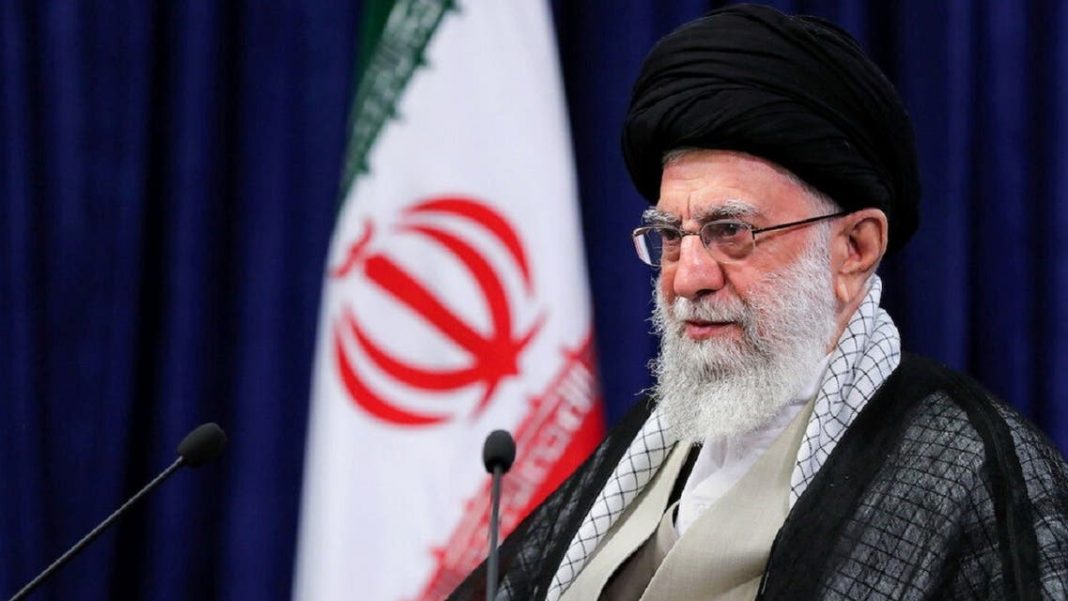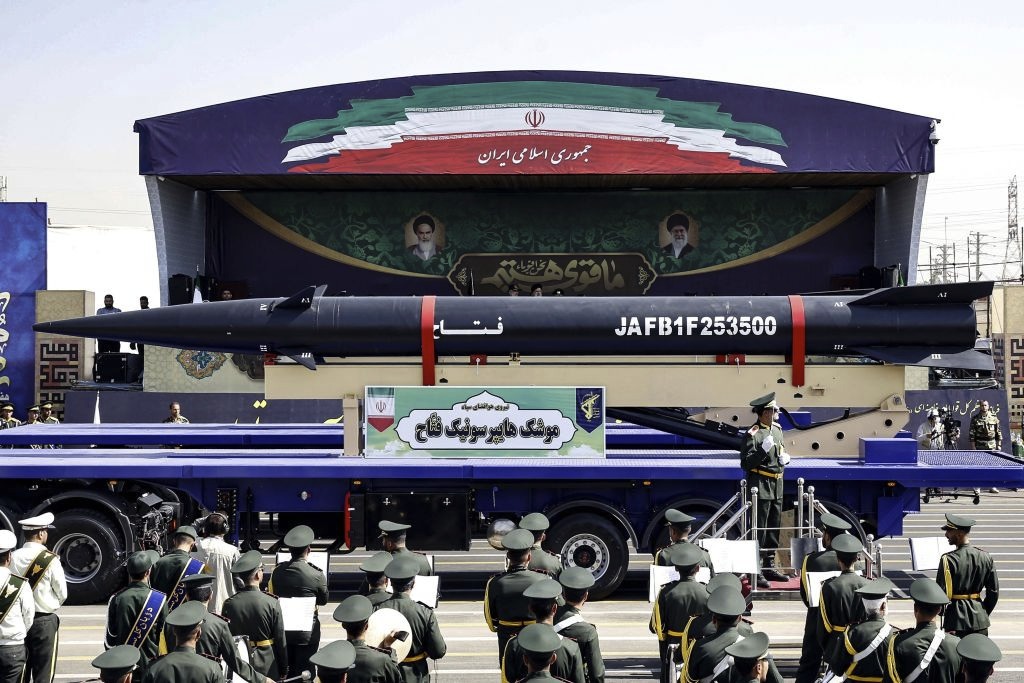Khamenei is Iran’s most important voter, and he wants more extremism, not less
Saeed Ghasseminejad and Behnam Ben Taleblu/Alarabiya/June 14/2021
سعيد قاسمي نجاد وبهنام بن طالبلو: خامنئي هو أهم ناخب في إيران ويريد المزيد من التطرف وليس العكس
Elections have consequences, even in the Islamic Republic of Iran. Nobody knows this better than Supreme Leader Ali Khamenei, the country’s most powerful person and most important “voter.” Through his agents in Iran’s byzantine bureaucracy, Khamenei intends to make the most of the upcoming presidential election to cement his hardline legacy and promote extreme politics, even after his passing.
“We expect you to realize the weight of the work and know what heavy responsibility you want to take on,” charged Khamenei to those interested in running for president at the start of the Iranian calendar year 1400 this March. Since then, Iran’s Guardian Council, a 12-person body that vets candidates for public office and is loyal to Khamenei, has approved a mere seven men out of a pool of 592. Despite putting a token technocrat and lackluster reformist on the ballot, the Council elevated several hardliners closer to, what is at least on paper, the country’s second most powerful position.
While the parading of candidates and disqualification of regime devotees in Iran’s already tightly managed electoral process is not new, the decision to bar pragmatists – and now long-standing members of the traditional principlist faction – stems from three opportunities, or better put, heavy responsibilities, bearing down on Khamenei during this election (read: selection) cycle.
The first is the opportunity to capitalize on Washington’s eagerness to return to the 2015 nuclear deal known as the JCPOA and dispense with the fig-leaf of moderation that past pragmatic presidents offered. If sanctions relief will be on the table no matter who is at the helm, then Khamenei may feel safe enough to ditch the window-dressing. The second is to continue to narrow the political spectrum while bringing-in more extreme elements into the mainstream. By purging and marginalizing reformers, pragmatists, and even some principlists, Khamenei can ensure a more hardline “second phase” of the Islamic Revolution. The third pertains to the issue of succession and the character of the government in a post-Khamenei Islamic Republic. A more cohesive and radical elite at the helm of a constellation of positions, especially the presidency, will ensure that Iran remains on a revolutionary trajectory even after the supreme leader’s passing. To actualize this, Khamenei will need the right man for the job.
Of the candidates approved, three have run and failed in past presidential contests. Two of them– Saeed Jalili and Mohsen Rezaie – have ties to the notorious Islamic Revolutionary Guard Corps (IRGC), and the other – Ebrahim Raisi – has ties to the clerical establishment. Together with Alireza Zakani and Amir-Hossein Ghazizadeh Hashemi, they represent an ultra-hardline majority on the ballot.
Among the five, Raisi, Iran’s chief justice who previously led a multi-billion-dollar religious foundation tied to Khamenei, is the perceived frontrunner. Raisi was supported by several former IRGC generals who withdrew or circumscribed their presidential bids to consolidate the hardline camp or because they saw the political writing on the wall. Either way, support of Raisi by IRGC figures is further indicative of two phenomena: That the IRGC is currently content ruling Iran without accountability (almost all past presidents have been clerics, not military men), and that IRGC veterans and radical clergy can cooperate just as much as they compete.
In addition to being sanctioned by Washington in 2019 for being appointed by Khamenei to lead a legal system that executes children, Raisi is best known for serving on a four-person committee in 1988 overseeing the execution of at least 5,000 political prisoners. Analysts have previously opined that Raisi could be Iran’s supreme leader in-waiting, but the first time he entered the political fray for president in 2017, he failed to best the incumbent Hassan Rouhani. Despite still lacking charisma and a well-developed political constituency, Raisi has again become the center of attention by both Iranian and international media, which increasingly frame the race as his to lose.
For perspective, there are three candidates believed to be to more hardline than Raisi, Ghazizadeh, Zakani, and Jalili. Jalili, for example, previously served as nuclear negotiator during the presidency of Mahmoud Ahmadinejad. For the US, an Iranian presidency led by any of the above men means that nuclear diplomacy will become harder, but still not impossible, as it is Khamenei who sets the country’s foreign policy.
Khamenei’s ease with a potential ultra-hardline president would signal that despite sanctions, he does not feel – or at least does not want to project – a pressing need to offset economic pain through political change, even cosmetic ones like a softer-sounding president. Thus, the Biden administration’s dogged pursuit of the JCPOA and willingness to offer even non-nuclear sanctions relief may inadvertently expedite the present contraction in Iranian politics by making such an eventuality cost-free.
While it is not clear if Khamenei will seek a speedy JCPOA reentry after the election or if he will look to extort additional relief through nuclear escalation, one thing is fast becoming clear. Khamenei is acting as if he no longer needs the soft-power capabilities, contacts, or finesse of Iran’s Foreign Minister Mohammad-Javad Zarif in order to adjudicate disputes with the West. As internal Iranian political commentary has made clear, hardliners could even be willing to embrace transactional diplomacy with America so long as they get the credit for lifting sanctions.
Khamenei clearing the field
Another impact of Khamenei’s narrowing of the political spectrum is to significantly reduce intra-regime competition, a critical component of the “competitive authoritarianism” seen in past Iranian presidential elections. Despite all factions seeking the perpetuation of the Islamic Republic and adhering to the revolutionary regime’s governing ideology of the “Guardianship of the Jurist,” Khamenei has been pushing for more. Specifically, Khamenei has gradually squeezed the reform movement while also introducing more extreme hardline elements into the political fray.
For instance, in 2009, Khamenei eliminated the branch of reformists most closely associated with former President Mohammad Khatami, which in turn forced reformists – as well as those looking for a protest vote or settling for “the least bad option” – to have to support former Prime Minister Mir Hossein Mousavi or former Parliament speaker Mehdi Karoubi. That election was ultimately rigged in favor of a second term for the ultra-hardline Mahmoud Ahmadinejad.
In 2013, Khamenei eliminated the entire reformist faction, and even disqualified former President Ali Akbar Hashemi Rafsanjani, who represented the pragmatists, from running for president. As a result, reformists and pragmatists were forced to create a coalition and throw their support behind Hassan Rouhani, a bureaucrat and former nuclear negotiator with deep ties to Iran’s security state.
In 2021, Khamenei not only eliminated the current First Vice-President Eshaq Jahangiri, but went one step further and eliminated former principlist parliamentarian Ali Motahari and former principlist Speaker of Parliament, Ali Larijani, the latter of which has ties to both the IRGC and Iranian state television.
Popular Persian parlance has described revolutionary Iran’s political spectrum as a moving train that loses passengers over time. But what three decades of Khamenei as supreme leader has proven is that the Islamic Republic is a train composed of several cars, each representing a different faction. While these factions are committed to the revolution and supreme leader, Khamenei is nonetheless de-linking select cars over the course of the train’s journey. As cars are detached, the train moves with greater speed towards its destination, but one that is not a kinder and gentler Islamic Republic, not even after Khamenei’s death.
Eight decades into his life, finality is something Khamenei can ill afford to ignore, especially if he is concerned about preserving his legacy. Given that most Iranian presidents serve two terms, by the time the next president leaves office, Khamenei could be 90 years old. While it is unclear if he will live to celebrate that day, what is clear is that the question of succession is already looming. Regardless of whether Raisi is Khamenei’s heir apparent, the next president may have an opportunity to influence events in the aftermath of Khamenei’s death from the bully-pulpit. That’s why Khamenei is insisting they are cut from the right revolutionary cloth.
At the moment, Khamenei has no designated successor. While an all-clerical body called the Assembly of Experts is legally tasked with selecting the next leader upon Khamenei’s death, prior to doing so they may establish a “leadership council,” which according to the article 111 of the constitution, will consist of the president, the head of the judiciary, and one member of the Guardian Council picked by another political body called the Expediency Council.
Under such a scenario, Khamenei will need as many loyalists as possible to preserve the revolutionary trajectory his predecessor, Ayatollah Ruhollah Khomeini, charted, and he has maintained. Raisi or another hardliner could be just the sort of person to work with, rather than against other stakeholders like the IRGC and crack down on any domestic forces pushing for change.
Iranian people will lose if Khamenei wins
Despite the troika of opportunities presented to Khamenei by this political cycle, there is one force he has spurned despite rhetorically encouraging to turn out: The Iranian people. Coupled with ongoing political, public health, economic, social, environmental, and other crises in Iran, further political contraction and a greater presence of the extreme revolutionary flank in the mainstream is likely to lead to one of the lowest participation rates in the Islamic Republic’s electoral history.
This is ironic, as Khamenei has long used high voter turn-out as a shield against foreign pressure and a way to feign legitimacy that he knows the Islamic Republic lacks. Specifically, Khamenei has framed voting, regardless of the candidate, “as a vote for the Islamic Republic,” and elsewhere called voting, even in parliamentary elections, a “religious duty.”
Yet, last February’s parliamentary elections, which featured Iran’s lowest ever recorded turnout, may be a canary in the coal mine. Those elections followed three years of widespread nationalist protests indicating a preference for revolution against, rather than reform of, Iran’s political system. With those wants, needs, and demands still unanswered, Iranians are talking more openly about boycotting the election this week.
Khamenei’s election engineering this go around is therefore less about feigning popular support for the Islamic Republic than restructuring its political elite and preparing for the future. Accordingly, Khamenei will likely aim to use this cycle to remove yet another car from the Islamic Republic’s political train, but in so doing, he will ensure its eventual derailment. After all, as long as a candidate approved by Khamenei wins, it will be the Iranian people who lose.






















